Essential Guide to Vegetables That Grow in Spring: Top Picks for Your Garden
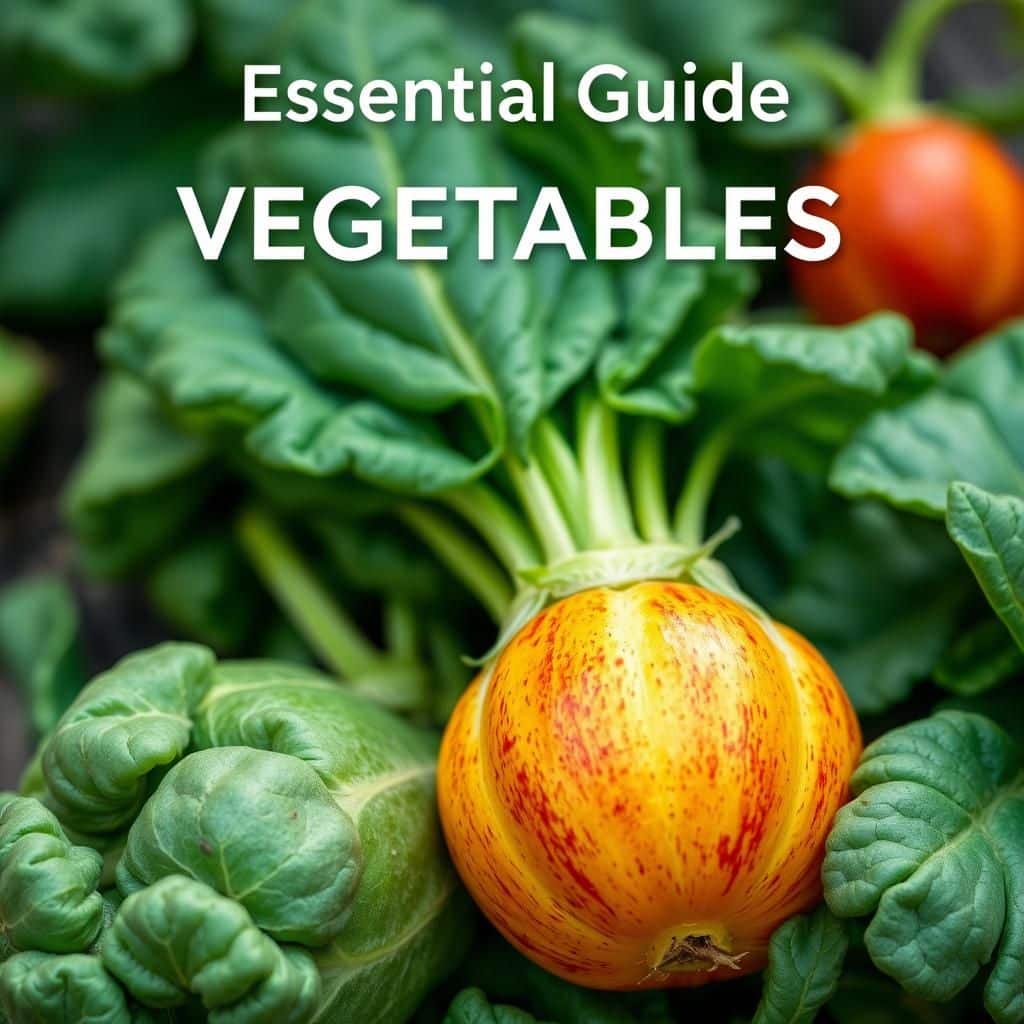
Spring is a time of renewal and growth, making it the perfect season to cultivate a vibrant garden filled with fresh vegetables. As the days grow longer and the soil warms, gardeners can take advantage of this ideal planting window to select the best crops. This essential guide explores top picks for vegetables that thrive in the spring, offering insights into their growing conditions, nutritional benefits, and tips for successful cultivation. Whether you are a seasoned gardener or a beginner, this article will help you create a flourishing vegetable garden that yields delicious produce throughout the season.
Spring Vegetables: A Bountiful Harvest
Spring is a vibrant season that brings forth a variety of vegetables that thrive in milder temperatures and abundant rainfall. As the soil warms up and daylight increases, many gardeners and farmers prepare to sow their crops. Among the most popular vegetables that are planted in spring are peas, radishes, and lettuce, which not only germinate quickly but also offer crisp flavors and nutritional benefits. This season allows for an early harvest, enabling homeowners to enjoy fresh produce before the intense summer heat sets in. Understanding which vegetables to plant in spring can enhance your garden's productivity and your culinary experiences.
1. Peas
Peas are one of the first vegetables to sow in spring as they prefer cooler temperatures. They can be planted as soon as the soil can be worked, often in early March. Peas, particularly sweet peas and snap peas, not only enrich the soil with nitrogen but also offer sweet, crunchy pods that are delicious in a variety of dishes. They require support like trellises as they grow, and with regular watering, they will thrive until late spring or early summer.
2. Radishes
Radishes are a fast-growing spring vegetable, typically germinating within a week of planting. Their ability to grow quickly allows for multiple harvests throughout the season. With various types ranging from red globe to black Spanish, radishes can be used in salads or as a crunchy snack. They prefer cool weather and can be sown successively every few weeks to ensure a continual supply, making them a favorite among both novice and experienced gardeners.
3. Lettuce
Lettuce is an essential green that flourishes in the cooler temperatures of spring. Varieties like romaine, butterhead, and leaf lettuce can be directly sown into the garden or started indoors for an early yield. Lettuce grows rapidly and needs consistent moisture to prevent bitterness. By planting in succession, gardeners can enjoy fresh salads throughout the spring months when temperatures are favorable for this leafy vegetable.
4. Spinach
Spinach is another nutrient-rich green that grows best in the cooler months of spring. This vegetable is rich in vitamins and minerals and can be planted as early as the soil is workable. Spinach thrives in rich, well-drained soil and requires regular watering. With a short growing period, it can be harvested as young leaves or allowed to mature for a heartier yield. Spinach can also be used in salads, smoothies, and cooked dishes.
5. Carrots
Carrots are a very rewarding spring vegetable that can be sown directly into the ground. With their sweet, crunchy texture, carrots thrive in loose, well-drained soil free of stones. They take longer to germinate compared to other spring vegetables, typically requiring about two weeks, but the wait is worthwhile. These root vegetables are often harvested in late spring and can be eaten raw or cooked. Regular thinning is important to ensure that the carrots grow to full size.
| Vegetable | Planting Time | Harvest Time | Growing Conditions |
|---|---|---|---|
| Peas | Early March | Late Spring | CooL, well-drained soil |
| Radishes | March - April | 4-6 weeks later | Cool weather |
| Lettuce | March - April | 5 weeks later | Well-drained soil, consistent moisture |
| Spinach | Early March | 4-6 weeks later | Rich, well-drained soil |
| Carrots | April | Late Spring | Loose, well-drained soil |
What are the best vegetables to grow in spring?
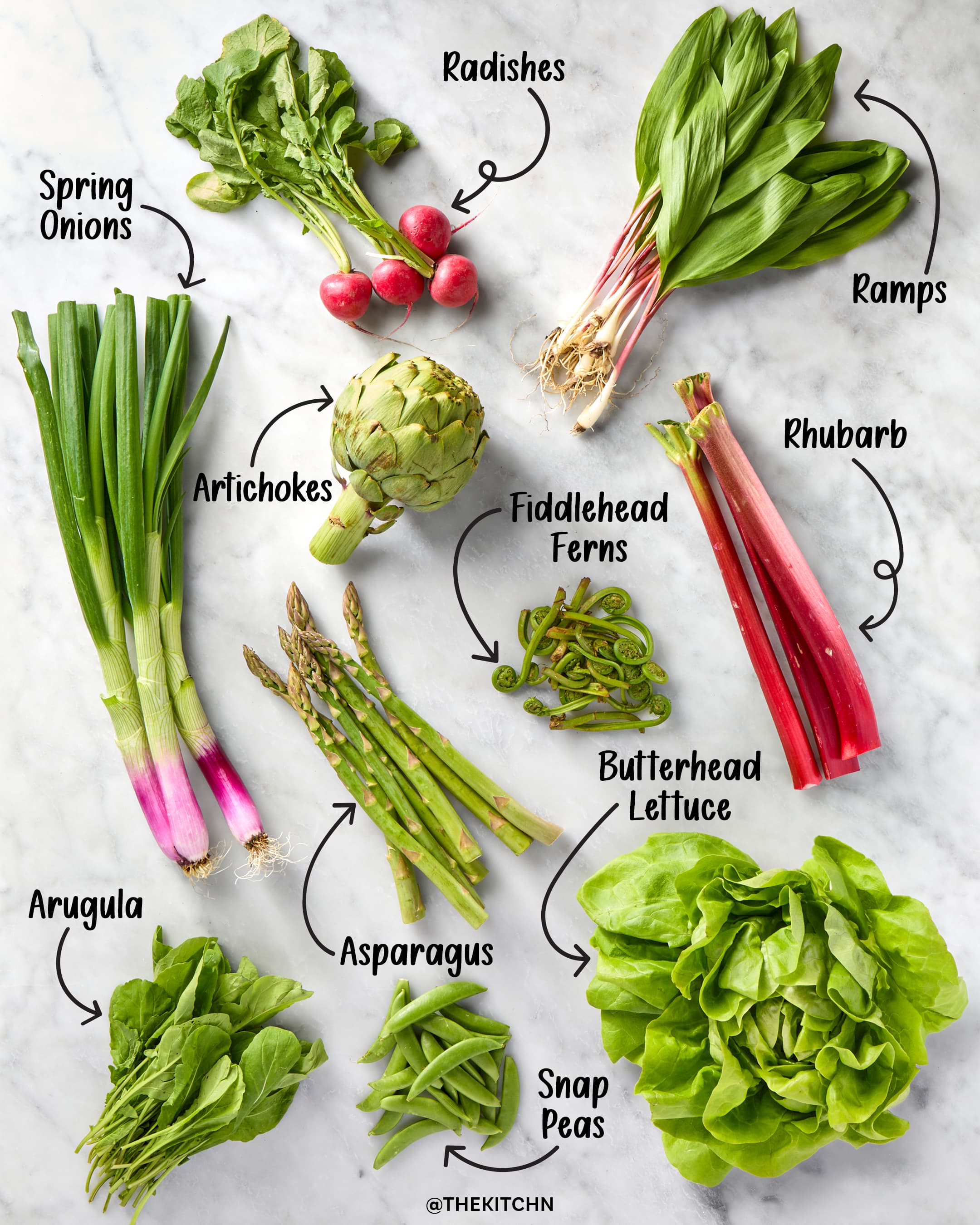
Top Cool-Season Vegetables
Cool-season vegetables thrive in the mild temperatures of early spring. These vegetables can be sown as soon as the soil is workable and usually tolerate light frost. They are essential for gardeners looking to maximize their harvest early in the growing season. Notable examples include:
- Spinach: Fast-growing and nutrient-rich, it can be harvested multiple times.
- Lettuce: Various types such as romaine and butterhead grow quickly and provide fresh greens.
- Radishes: They mature rapidly, often within three to four weeks, making them perfect for quick yields.
Popular Warm-Season Vegetables
Once the danger of frost has passed, warm-season vegetables can be planted. These crops thrive in warmer soil and temperatures. Starting them in spring allows for a robust harvest during the summer months. Important warm-season vegetables include:
- Tomatoes: Versatile and popular, they can be grown in various styles like determinate and indeterminate.
- Cucumbers: Fast-growing, they require support for climbing and can be used in salads or pickling.
- Peppers: Available in many varieties, they add spice and flavor to dishes and can be sweet or hot.
Herbs to Plant in Spring
Herbs are an excellent addition to vegetable gardens in spring. They require minimal space and can enhance the flavor of many dishes. Many herbs thrive when planted in the spring, providing fresh seasoning throughout the growing season. Consider growing:
- Basil: This fragrant herb loves warm weather and pairs well with tomatoes.
- Cilantro: Fast-growing, ideal for salsas and provides flavor in various dishes.
- Parsley: A hardy herb that can be grown as both an annual and biennial, adding garnish to meals.
Root Vegetables for Spring Planting
Planting root vegetables in early spring can lead to a rewarding harvest. These vegetables grow underground and often require cool to moderate temperatures to thrive. They are rich in nutrients and can be stored for longer periods. Key root vegetables include:
See also:
- Carrots: Sown directly into the soil, they develop sweetness as they mature.
- Beets: These colorful vegetables are easy to grow and can be eaten fresh or pickled.
- Turnips: They are fast-growing and can be harvested young for tender roots or allowed to grow larger for storage.
Benefits of Companion Planting in Spring
Companion planting involves growing different plants close together for mutual benefits, such as pest control, pollination, and nutrient enhancement. In spring, certain combinations can increase yields and improve the health of crops. Effective companions include:
- Tomatoes and Basil: Basil enhances the flavor of tomatoes and repels harmful insects.
- Carrots and Onions: Onions repel carrot flies, helping carrot growth.
- Beans and Corn: Beans fix nitrogen in the soil, benefiting corn and improving overall soil health.
What veggies are in-season for spring?

Green Peas
Green peas are one of the first vegetables to arrive in spring, bringing a vibrant color and sweet flavor to meals. They can be enjoyed fresh, frozen, or canned, but fresh peas are particularly delightful. They are harvested shortly after the pods begin to fill out. Here are some ways to enjoy green peas:
- Raw in salads for a sweet crunch.
- Sautéed with garlic and onions for a delicious side dish.
- Pureed into soups for a creamy texture.
Asparagus
Asparagus is a springtime favorite known for its tender stalks and unique flavor. It typically appears in markets from March to June. The best asparagus is bright green and firm, and can be cooked in various ways. Consider these cooking methods:
- Grilled for a smoky flavor.
- Blanched and tossed into salads.
- Roasted with olive oil and garlic for a flavorful side.
Radishes
Radishes are quick-growing root vegetables that thrive in cool weather, making them ideal for spring gardens. They add a peppery zest to dishes and can be found in various colors and sizes. Here are some ways to use radishes:
- Pickled for a tangy garnish.
- Sliced raw in sandwiches or on charcuterie boards.
- Roasted to mellow their flavor and enhance sweetness.
Spinach
Spinach is another nutrient-rich vegetable that flourishes in the spring. This leafy green is packed with vitamins A, C, and K, making it a healthy addition to many meals. To incorporate spinach into your diet, consider these options:
- Sautéed with olive oil and lemon for a simple side dish.
- Blended into smoothies for a nutrient boost.
- Added to soups and stews for added nutrition.
Broccoli
Broccoli is a hearty green vegetable that thrives in spring weather and is beloved for its health benefits and versatility in cooking. Harvested before flowers bloom, it can be steamed, roasted, or eaten raw. Here are some popular ways to prepare broccoli:
- Steamed to preserve its nutrients and vibrant color.
- Stir-fried with other vegetables for a colorful dish.
- Blended into creamy soups for a nutritious meal.
What type of vegetable is grown in spring?

Spring is a wonderful season for gardening, and during this time, a variety of vegetables can be grown. Some of the most common types of vegetables that thrive in spring include:
1. Lettuce - A leafy green that grows quickly in cooler temperatures.
2. Spinach - Another leafy green that is packed with nutrients and enjoys the cool, moist conditions of spring.
3. Radishes - These root vegetables can be planted early in the season and typically have a fast growth cycle.
4. Carrots - While they take longer to mature, planting them in early spring yields sweet, crunchy roots by late spring.
5. Peas - These are one of the earliest crops to plant and can be sown directly into the ground as soon as the soil can be worked.
Benefits of Growing Spring Vegetables
Growing vegetables in the spring has numerous benefits. The cooler temperatures and ample rainfall during this time of year create ideal conditions for germination and growth. Additionally, spring vegetables often have a more delicate and fresh flavor compared to those grown in the heat of summer.
- Faster growth: Many spring crops can be harvested in a matter of weeks.
- Nutritional value: Spring vegetables tend to be richer in nutrients.
- Diverse options: A variety of vegetables can be grown to ensure a seasonal harvest.
Popular Spring Vegetable Varieties
Several types of vegetables are particularly popular among gardeners during spring. These include both leafy greens and root vegetables that can thrive in the cool soil.
See also: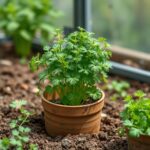
- Arugula: A spicy green that grows rapidly.
- Broccoli: A nutritious vegetable best suited for spring planting.
- Swiss Chard: A colorful green with a high yield.
Soil Preparation for Spring Vegetables
Before planting, it’s vital to prepare the soil effectively. Proper soil management increases the chance of successful crops and provides the necessary nutrients for growth.
- Testing soil pH: Ensures optimal growing conditions.
- Adding organic matter: Incorporating compost improves soil fertility.
- Loosening the soil: Enhances root growth and drainage.
Planting Techniques for Spring Vegetables
Employing the right planting techniques can lead to a bountiful harvest. Different vegetables might require specific methods of planting to ensure their best growth.
- Direct sowing: For crops like peas and radishes, seeds should be sown directly into the ground.
- Transplanting: Young plants of varieties like broccoli can be started indoors before moving them outside.
- Spacing: Ensures adequate room for plants to grow without competition.
Pest Management in Spring Gardens
Pests can be a challenge in spring gardens. Knowing how to manage pests and diseases early in the season can help protect vegetable crops.
- Encouraging beneficial insects: Attracting ladybugs and lacewings can reduce pest populations.
- Crop rotation: Helps prevent the buildup of pest populations.
- Natural repellents: Using solutions like neem oil can deter unwanted insects.
What's the best vegetable to grow in spring?
The best vegetable to grow in spring is peas. Peas thrive in cooler temperatures, typically between 50°F and 70°F (10°C to 21°C), making them ideal for early spring planting. They are also relatively low maintenance and offer a quick yield, often ready for harvest within 60 to 70 days. Additionally, peas fix nitrogen in the soil, which benefits subsequent crops.
Benefits of Growing Peas
Growing peas provides numerous benefits to the gardener and the garden itself.
- Nitrogen Fixation: Peas enrich the soil by fixing nitrogen, which helps improve soil quality.
- Erosion Control: Their shallow roots help stabilize the soil, reducing erosion.
- Flavor and Nutrition: Fresh peas are sweet and nutritious, packed with vitamins A, C, and K.
Ideal Growing Conditions for Peas
For optimal growth, peas require specific environmental conditions.
- Soil Type: Well-draining, loamy soil with a pH of 6.0 to 7.0 works best.
- Sunlight: Peas prefer full sun but can tolerate partial shade.
- Watering: Regular watering is crucial, but avoid waterlogging as it can lead to root rot.
Varieties of Peas to Consider
There are various types of peas, each with unique characteristics and flavors.
- Garden Peas: These are the classic sweet peas that require shelling.
- Snow Peas: Edible pods that can be eaten whole, perfect for stir-fries.
- Snap Peas: A hybrid between garden and snow peas, they offer sweet flavor and crunchy texture.
Cultivation Tips for Spring Peas
To ensure a successful pea harvest, consider the following cultivation tips.
- Planting Time: Sow peas as soon as the soil can be worked, typically 4-6 weeks before the last frost.
- Spacing: Space seeds about 1 inch apart in rows to allow for healthy growth.
- Support Structures: If growing climbing varieties, provide trellises or supports to help plants grow vertically.
Pest and Disease Management
Proper management practices can help minimize pest and disease issues with peas.
- Regular Monitoring: Check for signs of pests like aphids or diseases such as powdery mildew regularly.
- Companion Planting: Plant peas alongside carrots or radishes to deter pests naturally.
- Crop Rotation: Rotate crops yearly to prevent soil-borne diseases.
Questions from Our Readers
What are some popular vegetables that grow in spring?
Many gardeners enjoy planting spring vegetables such as peas, radishes, lettuce, and spinach. These crops thrive in the cooler temperatures of spring and can generally be sown as soon as the soil is workable.
How do I prepare the soil for spring vegetable planting?
To prepare the soil for spring vegetables, it’s essential to ensure it is well-drained and rich in nutrients. Adding organic matter, such as compost, will enhance soil structure and fertility, making it ideal for planting.
See also: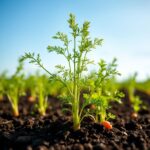
When is the best time to plant spring vegetables?
The best time to plant spring vegetables varies based on your location but generally falls between March and April. It's important to consider the last frost date in your area to prevent damage to young plants.
Can I grow vegetables indoors during spring?
Yes, you can grow spring vegetables indoors, especially if you use containers and ensure they get adequate light. Starting your seeds indoors can help you gain a head start on the growing season and allows for easier management of temperature and conditions.

If you want to read more articles like Essential Guide to Vegetables That Grow in Spring: Top Picks for Your Garden, we recommend you check out our Seeds category.
Leave a Reply
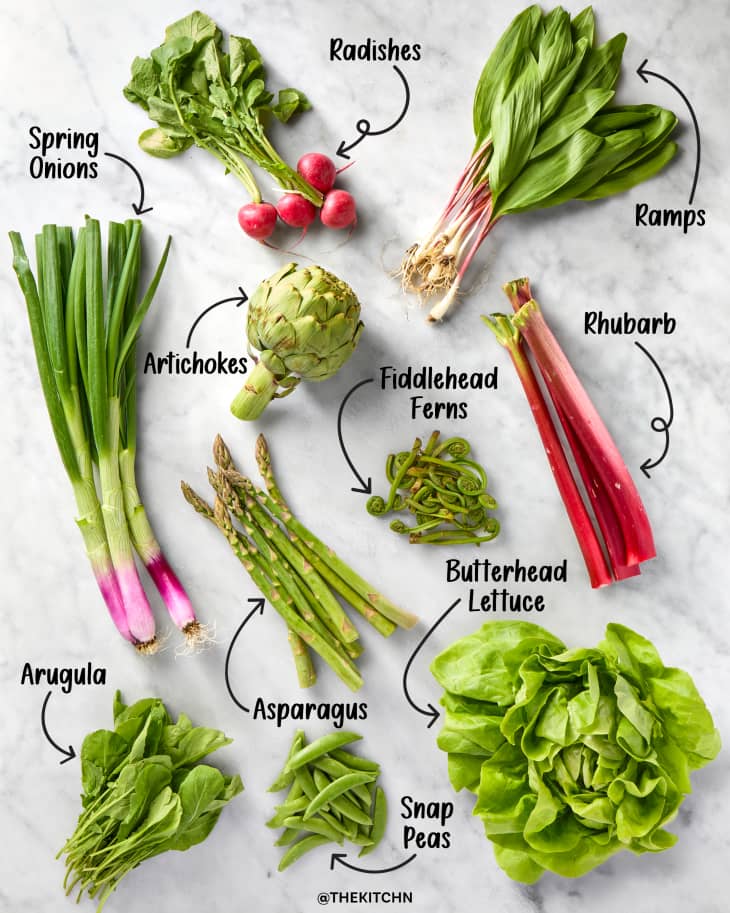
Related Articles